Ultrafast & Terahertz Photonics Group
|
Ultrafast optical techniques provide powerful probes of different states of matter, using light pulses that have femtosecond duration. In Warwick our activities span a number of areas:
|
Group facilitiesThe Group has labs across the campus, in the main Physics building, Materials and Analytical Sciences, and Millburn House. Read more about our experimental capabilities in terahertz science and technology. We also run the Warwick Centre for Ultrafast Spectroscopy Research Technology Platform. 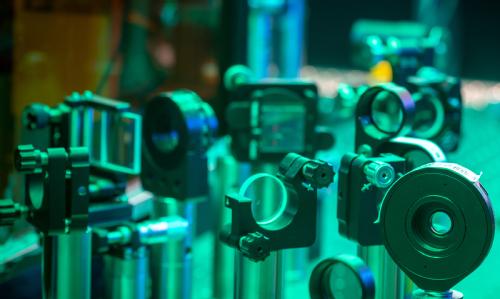
We make use of a wide range of Warwick's excellent materials analysis equipment, including X-ray diffraction, Raman spectroscopy, electron microscopy and magnetometry. |
Join the group!Please get in touch if you are interested in a PhD or MSc by Research in the group. We are also happy to support postdoctoral researchers to apply for fellowship schemes. 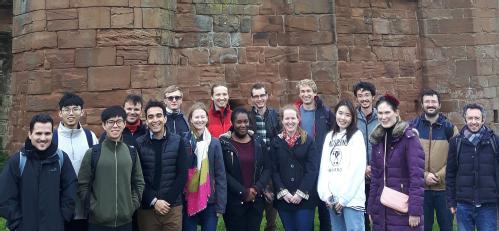
Group, Theses & PhotosContact details for our current group members and our photo gallery. For recent theses from the group, please see here. |
Research areas
Nanomaterials
We use pump/probe spectroscopy to study how light and matter interact on femtosecond to nanosecond timescales. Using visible probes we can track electronic processes, while infrared radiation lets us study vibrational states of molecules and atomic-scale defects in semiconductors.
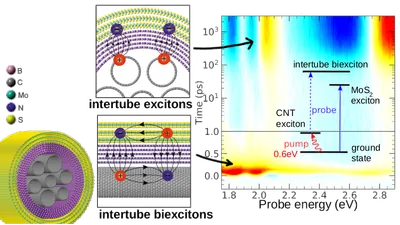
Recent papers:
The 3237 cm−1 diamond defect: Ultrafast vibrational dynamics, concentration calibration, and relationship to the N3VH0 defect
High-bandwidth perovskite photonic sources on silicon
Terahertz medical imaging
Performing in vivo studies of the THz properties of skin is a major initiative in the group, supported by the EPSRC Terabotics Programme GrantLink opens in a new window. We develop robust measurement protocols and test them on a statistically significant number of patients, cross-checking with other methods.
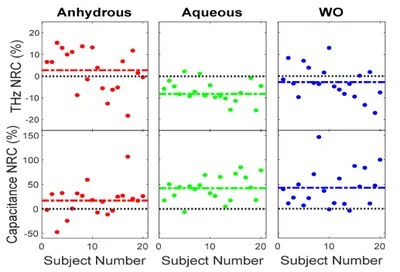
Recent papers:
Terahertz probe for real time in vivo skin hydration evaluation
Spectroscopic insight on impact of environment on natural photoprotectants
The 2023 terahertz science and technology roadmap
Semiconductors and Energy materials
A major strand of our research is to improve our knowledge of the fundamental science underpinning new semiconductor materials, such as metal-halide perovskites, which are often attractive for photovoltaic applications.
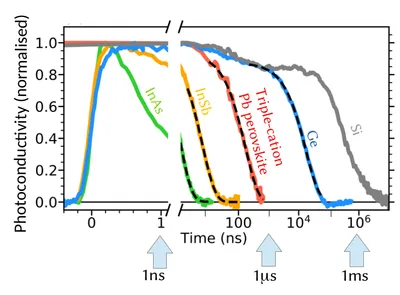
Recent papers:
Terahertz Emission via Optical Rectification in a Metal-Free Perovskite Crystal
High-bandwidth perovskite photonic sources on silicon
Resolving the Ultrafast Charge Carrier Dynamics of 2D and 3D Domains within a Mixed 2D/3D Lead-Tin Perovskite
Terahertz components, methods and techniques
We develop new THz devices and integrate them into novel systems designs that can perform THz imaging and THz spectroscopy faster, and with increased capabilities (e.g. polarisation control; robot-controlled probes).
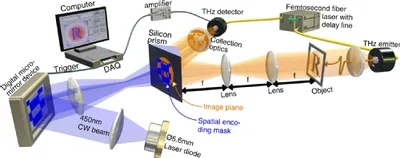
Recent papers:
Simultaneous measurement of orthogonal terahertz fields via an emission multiplexing scheme
Optimum Optical Designs for Diffraction-Limited Terahertz Spectroscopy and Imaging Systems Using Off-Axis Parabolic Mirrors
The 2023 terahertz science and technology roadmap
Recent publication highlights [filter by topic: view all | highlights | THz | perovskites | nano | biomedical]
Tracking a hysteretic and disorder-broadened phase transition via the electromagnon response in improper ferroelectrics
C. D. W. Mosley, D. Prabhakaran and J. Lloyd-Hughes
J. Phys. D: Applied Physics 51 084002 (Jan 2018) [ pdf ][ ref ]
We demonstrate that 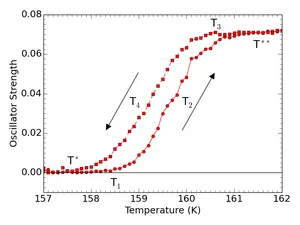 electromagnons can be used to directly probe the nature of a phase transition between magnetically ordered phases in an improper ferroelectric. The antiferromagnetic/paraelectric to antiferromagnet/ferroelectric phase transition in Cu1-xZnxO (x = 0, 0.05) alloys was tracked via the electromagnon response using terahertz time-domain spectroscopy, on heating and cooling through the phase transition. The transition was found to exhibit thermal hysteresis, confirming its first-order nature, and to broaden under the influence of spin-disorder upon Zn substitution. The energy of the electromagnon increases upon alloying, as a result of the non-magnetic ions modifying the magnetic interactions that give rise to the multiferroic phase and electromagnons. We describe our findings in the context of recent theoretical work that examined improper ferroelectricity and electromagnons in CuO from phenomenological and first-principles approaches.
electromagnons can be used to directly probe the nature of a phase transition between magnetically ordered phases in an improper ferroelectric. The antiferromagnetic/paraelectric to antiferromagnet/ferroelectric phase transition in Cu1-xZnxO (x = 0, 0.05) alloys was tracked via the electromagnon response using terahertz time-domain spectroscopy, on heating and cooling through the phase transition. The transition was found to exhibit thermal hysteresis, confirming its first-order nature, and to broaden under the influence of spin-disorder upon Zn substitution. The energy of the electromagnon increases upon alloying, as a result of the non-magnetic ions modifying the magnetic interactions that give rise to the multiferroic phase and electromagnons. We describe our findings in the context of recent theoretical work that examined improper ferroelectricity and electromagnons in CuO from phenomenological and first-principles approaches.

